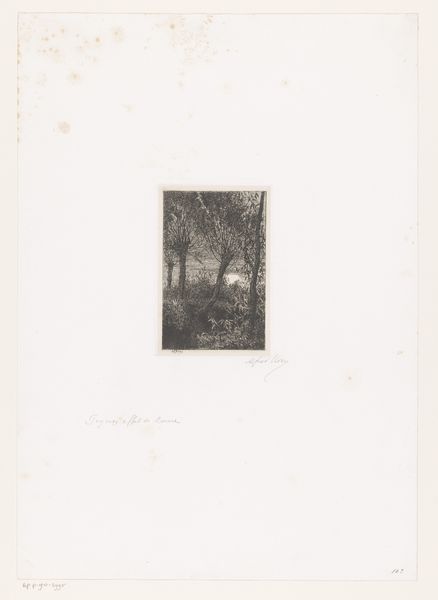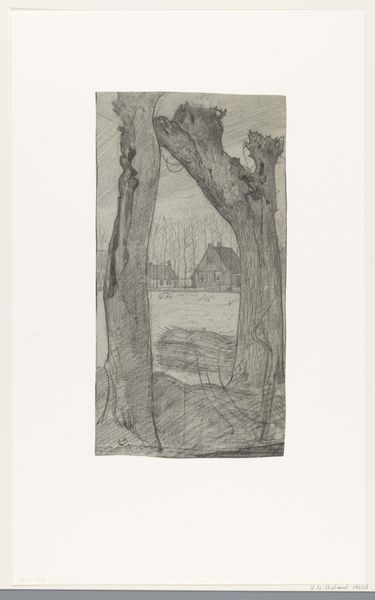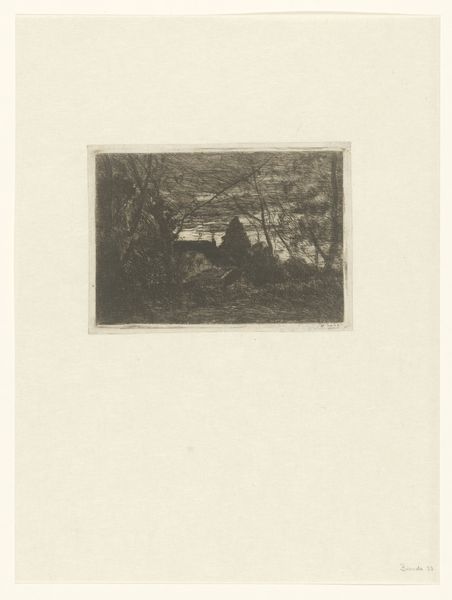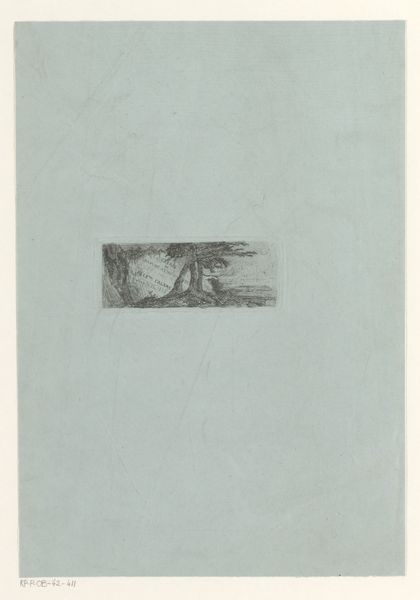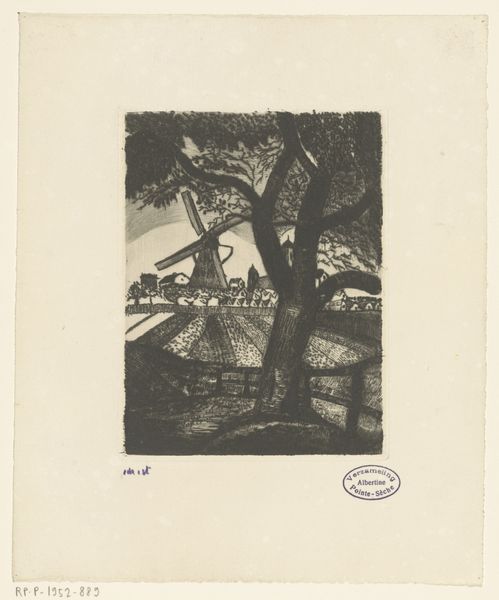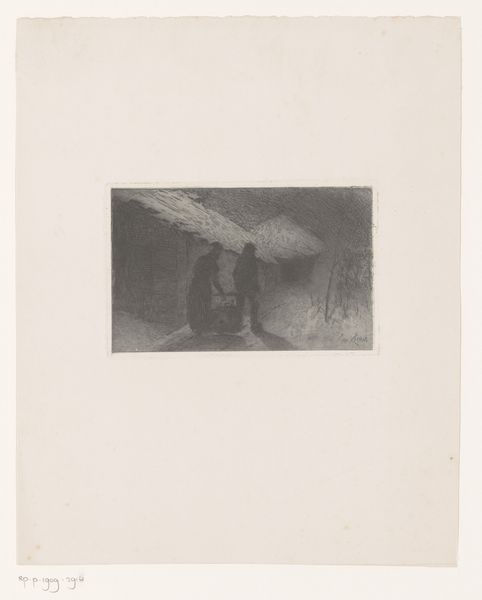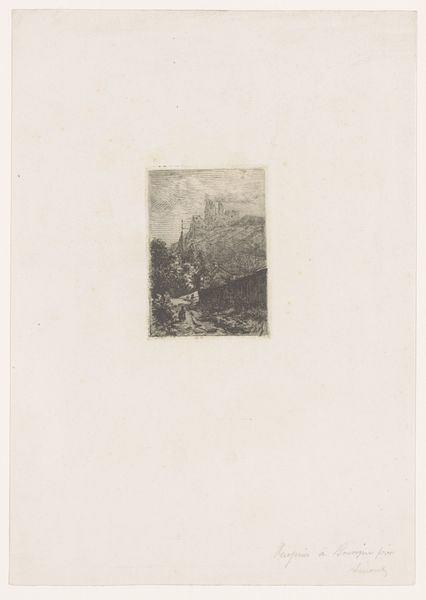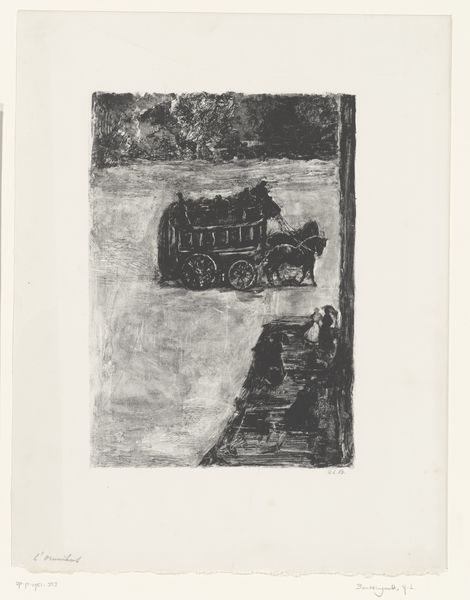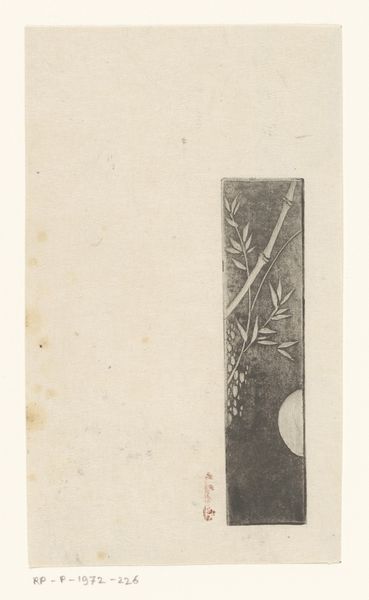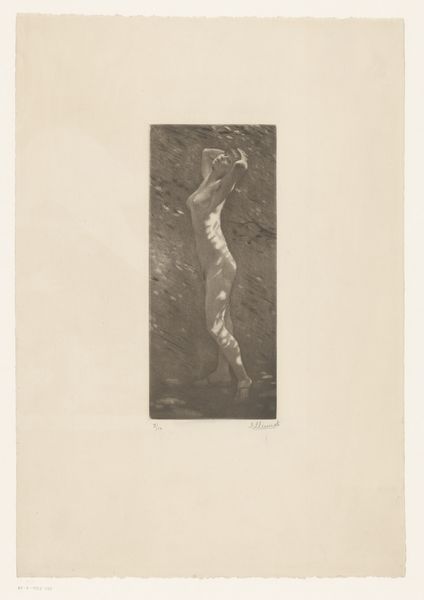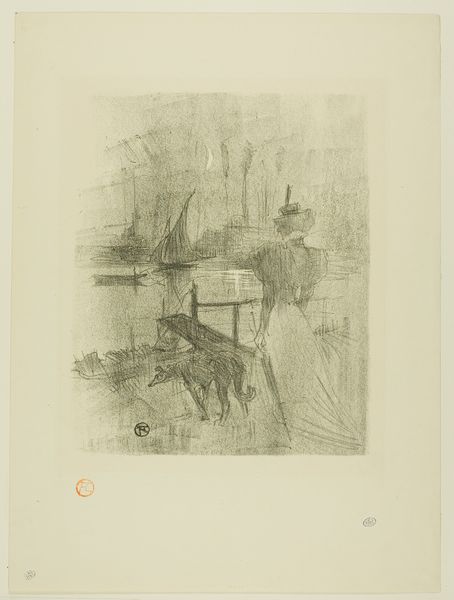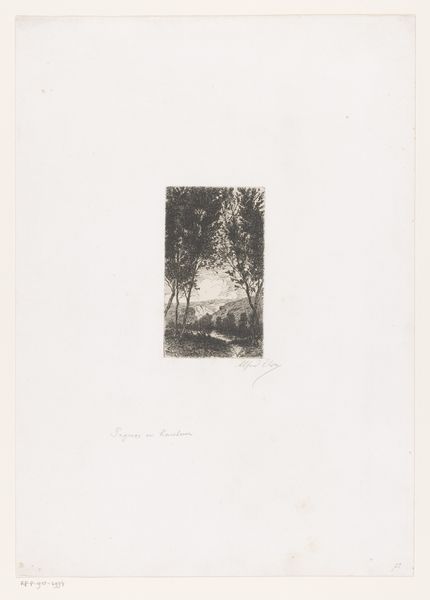
print, etching
# print
#
etching
#
landscape
#
modernism
Dimensions: height 108 mm, width 57 mm
Copyright: Rijks Museum: Open Domain
Editor: So this is "Corsican Landscape," an etching made in 1922 by Lodewijk Schelfhout. I’m struck by how small it is and also by the high horizon line which, for me, creates a compressed and somehow claustrophobic feeling. What do you see in this piece, particularly thinking about its context? Curator: It's fascinating you find it claustrophobic. While Schelfhout is categorized within Modernism, look at the broader landscape tradition of the period. Early 20th-century artists were increasingly interested in capturing not just the picturesque beauty of nature, but the human impact on it. Do you see how those power lines slice through the landscape? Editor: Yes, now that you mention it, they're quite visible, bisecting the idyllic scene. Are you suggesting those are deliberate and comment on Modernity? Curator: Precisely. Schelfhout isn’t just presenting a pretty vista. He is embedding visual cues about societal changes, industrial advances, and our relationship to the land. The scale of the etching itself invites a more intimate, perhaps even uneasy, contemplation of these changes. Consider the Rijksmuseum itself, and the cultural forces in the Netherlands in the early 20th century, during which these kind of cultural values would become dominant. Editor: I hadn't considered the work in this light before, but now I can see the deliberate layering of themes that were likely considered progress or advancement in culture during that era and place. I still think it's a tad claustrophobic, though! Curator: And that feeling is valid, perhaps Schelfhout wanted to emphasize unease or a subtle warning about our rapidly changing environment and value.
Comments
No comments
Be the first to comment and join the conversation on the ultimate creative platform.
